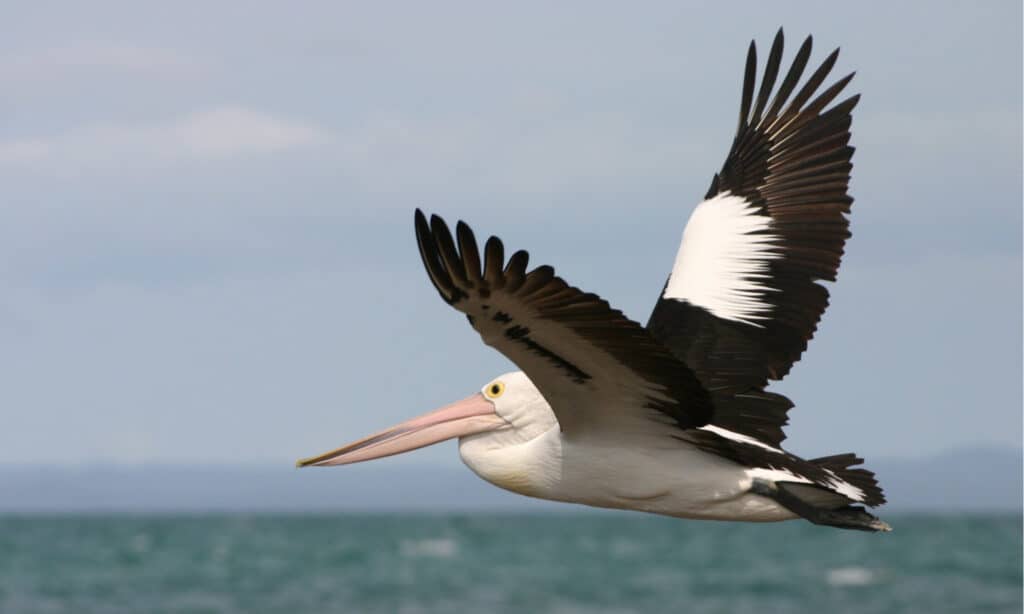Australia is not only the smallest continent in the world, but also the lowest. Its average elevation is 1,083 feet (330 meters) above sea level. The highest mountain peak in Australia, Mount Kosciuszko (7,310 feet/2228 meters), is four times lower than the highest mountain in the world, Mount Everest (29,029 feet/8,848 meters).
If Mount Kosciuszko is the highest, where is the lowest point in Australia? Read on to learn all about the fascinating and beautiful salt lake that is Australia’s lowest point.
Where is the Lowest Point in Australia?
Australia’s lowest point is South Australia’s Kati Thanda-Lake Eyre. At 49 feet (15 meters) below sea level, it’s a great salt lake that sits empty most of the time.

At 49 feet below sea level, the fascinating and beautiful Kati Thanda-Lake Eyre is Australia’s lowest point.
©iStock.com/JohnCarnemolla
Lake Eyre comprises two lakes, a large northern lake and a smaller southern lake. The two lakes are connected through the narrow Goyder Channel. The lowest point is located on the north lake bed. The lake is considered an endorheic lake, or terminal lake because it has no outlet.
If the entire lake were to fill with water, it would become Australia’s largest lake at 3,668 square miles (or 9,500 square kilometers.) However, the lake usually contains little to no water as it is situated in an arid climate. When it’s dry, it’s a giant salt pan with salt crystals reflecting in the bright Australian sunlight.
Where is Lake Eyre Located on a Map?
Lake Eyre is located within Kati Thanda-Lake Eyre National Park in the deserts of central Australia. The seasonal lake is in a very remote region in the southwestern corner of the Great Artesian Basin. It’s about 430 miles (697 kilometers) north of Adelaide.
History of Lake Eyre
The Great Salt Lake formed around 200 million years ago during the Mesozoic Era. Edward John Eyre was the first European to spot the lake in 1840, and the lake was named after him. However, the lake had long been an important feature for the native people living in the area. The Arabana people have lived in the region around Lake Eyre for thousands of years. In 2012, the lake was renamed to include its Aboriginal name, Kati Thanda.
According to NASA, 100,000 years ago, the lake was filled with water and ten times larger than today’s basin. When the lake was full of water it was surrounded by a lush, green oasis. Many animals lived in the habitat including the now-extinct marsupial lions (Thylacoleo carnifex), and giant wombats (Diprotodon optatum).
The Geology of Lake Eyre
Lake Eyre fills about an average of twice per century. It’s fed by local rain and a network of rivers and streams. When the tropical monsoon hits the area, floodwaters from the rivers flow into the lake. Although the lake is rarely full, it does fill partially an average of every few years. The lake has no outlet for the water, it all evaporates in the hot, desert sun of the outback. It also seeps back into the desert floor. Once the lake fills, it takes about two years to fully drain.
A fascinating phenomenon occurs as the water begins to dry. The high salinity levels combined with a pink bacteria (halobacteria) turns the water into a bright, strawberry milkshake hue. As the water evaporates, the salt becomes more concentrated, and the water turns pinker.

The high salinity levels combined with a pink bacteria (halobacteria) turns the water into a bright, strawberry milkshake hue.
©R.H. Koning/iStock via Getty Images
Since 2009, some level of flooding has occurred every year. As of 2022, the National Parks and Wildlife Service reported the north lake was filled to 50%, while the south was 60%.
Wildlife
Water transforms the lake basin into a lush habitat for many flocks of birds. The desert comes alive with the floodwaters. Algae, frogs, fish, and brine shrimp appear in the waters. Grasses and wildflowers bloom along the shores, and millions of birds follow the floodwaters to the lake to roost and raise their young.

Australian pelicans flock to Lake Eyre when the floodwaters rise.
©Torfinn/Shutterstock.com
Some species that migrate there during wet periods include Caspian terns, Australian pelicans, sharp-tailed sandpipers, and silver gulls. As the water begins to dry, the birds eventually migrate, and the area becomes a barren sand plain once again.
How to Visit Kati Thanda-Lake Eyre

Viewing Kati Thanda-Lake Eyre from the air allows you to see the fascinating patterns made by the salt as the water evaporates.
©Heather Rose/iStock via Getty Images
The lake is in an extremely remote area, but there are several ways of reaching it.
View It by Air
One of the best ways to view the stunning landscape is to see it by plane. Several local companies offer air tours over the lake. This is truly the best way to take in the entire area and see the amazing patterns created by the salt.
Take a Four Wheel Drive
The drive is about a day’s drive from Adelaide. Be sure to check road conditions as they can change quickly based on rain. Camping is permitted in some areas around the lake. But note that it’s a harsh, desert environment and best left for experienced campers.
Join a Tour Group
A popular way to view the lake is via a tour group. There are air tours, four-wheel drive tours, and options for a combination of both.
The photo featured at the top of this post is © iStock.com/Heather Rose
Thank you for reading! Have some feedback for us? Contact the AZ Animals editorial team.






